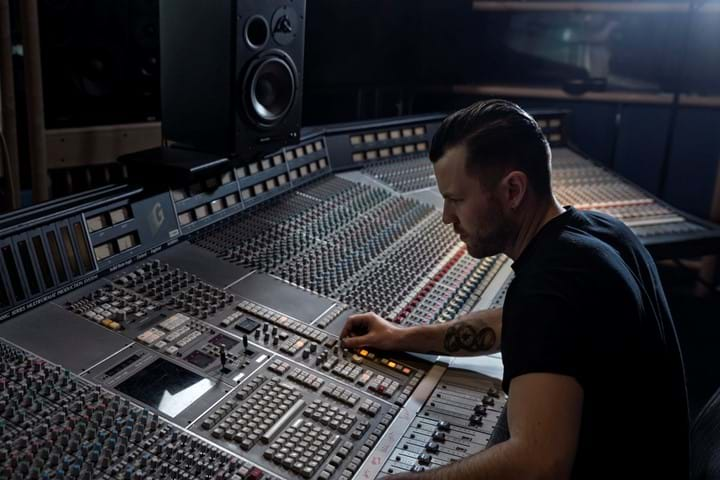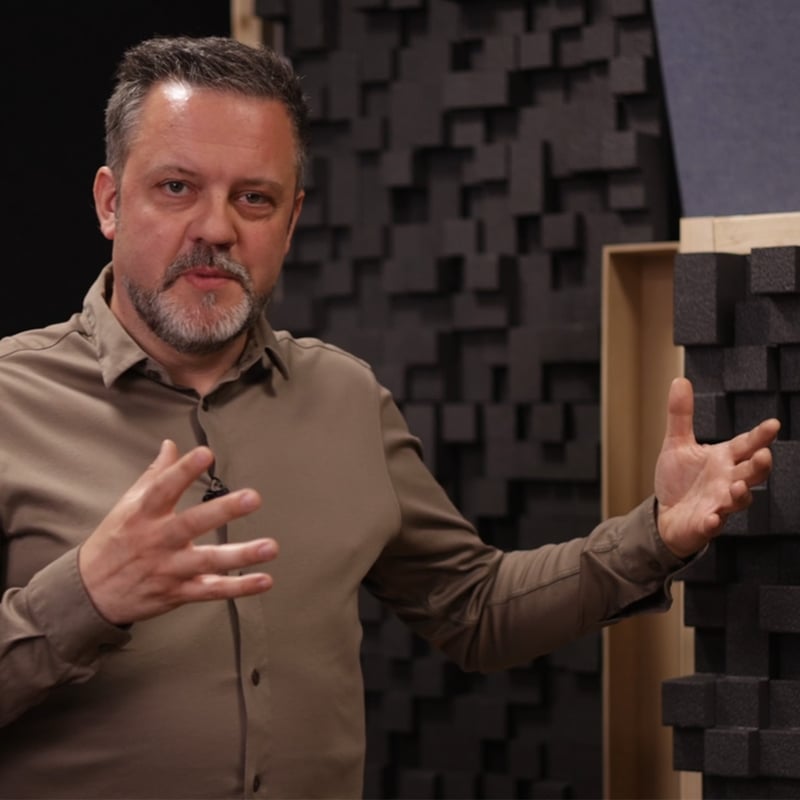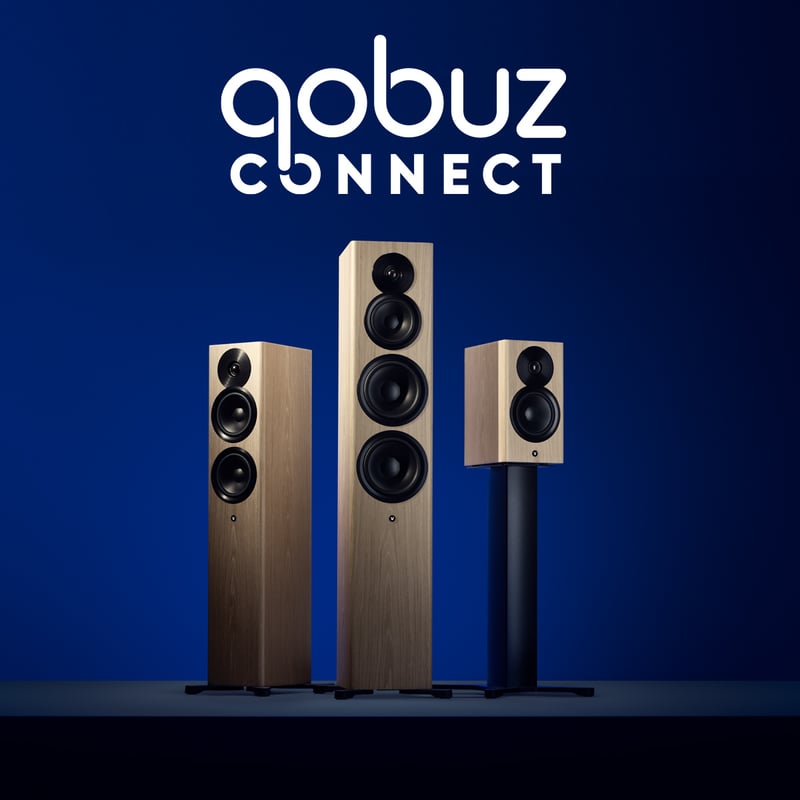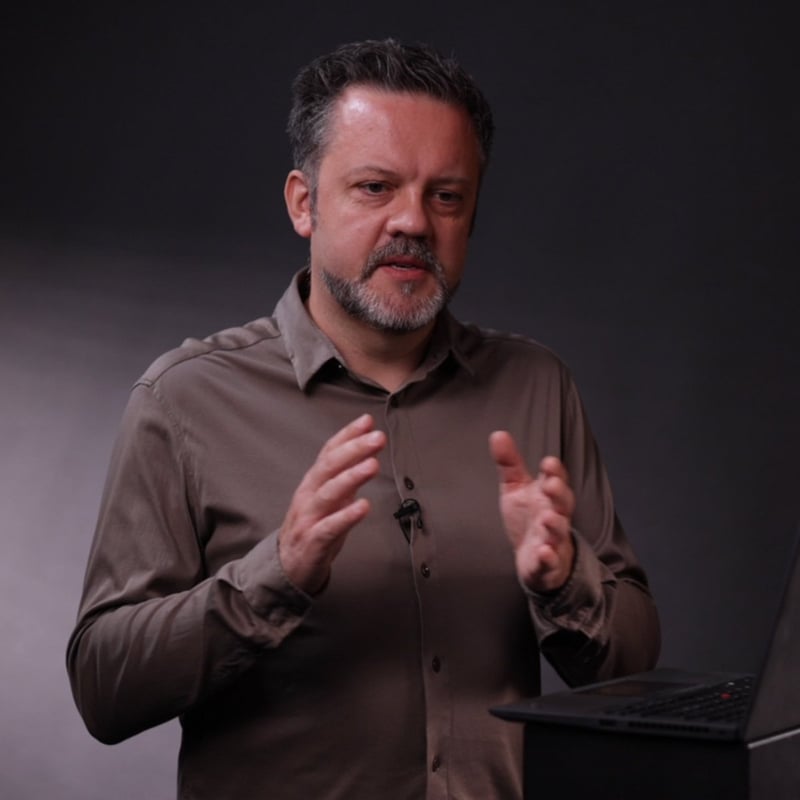Rehearsing is crucial
Other artists might need time to bed in and find what works. You might all want to play in the same room, together, looking each other in the eye; you might rather do it all separately in booths. Either is fine. You want the band to be comfortable, Tim says, because that’s when the best music starts to happen. “They’re just coming here to do what they do, and all we’re doing is helping them get it down,” he adds.
Most of the work is done before the ‘Record’ button is even looked at. The guitarist, bassist and vocalist get acquainted with where they are and what they’re doing. They’re able to hear themselves comfortably, they can hear everything else going on around them comfortably, and they’re confident.
Comfort = performance
Spinal Tap-style shouting-matches aside, that means they might use their own personal vocal microphones, their own cables, insist on setting up the vocal booths a certain way, have no brown M&Ms in the chill-out area… For example, one regular – and stratospherically famous – artist likes Studio 2. “He likes his own Audio-Technica AT194 and M150X microphones. As long as he’s in that room, and he’s got his engineer in the room with him, he’s happy.”
It all has to work. The last thing you want to worry about as an artist is for you, your producer and your engineer to be worrying about what’s happening in the signal chain – you need to know that exactly what you hear is exactly what’s being recorded.
“You’ve got two specific workspaces,” says Tim. “Recording and mixing; they’re different environments. Recording is about hearing what’s going on on the floor with your artist – whether it’s an orchestra, a band or a soloist. You need to hear what they’re doing, and you’re optimising your recording for that.
“Then you get mixing. What you’re doing there is listening to each strand, each track, each thread. You’re bringing things together… and not necessarily the way the artist wants.”
If they’ve got any doubts, they won’t. Any artistic conflicts or anything that might make them more creative, that’s an environment in the room – nothing to do with us!
Tim Vine-Lott,
Recording vs mixing
Surely the artist knows best, though? Surely they know their music better than anyone? “The artist has an amount of input,” says Tim. “Mixing is a different discipline to recording. The artist knows how they want to play the parts, but when you’re mixing you need to hear everything that’s going on and make sure you’re recording it as effectively as possible.”
It’s crucial, then, to trust the people on the other side of the glass: the engineer and the producer. The engineer sits in front of the mixing desk and tweaks the controls. He’s the one taking your unvarnished music and committing it to tape (or, these days, hard-drive). The producer leads the creative process. He’ll be the one offering pointers on how to approach a take – whether to do it again if he thinks you can do better, or telling you to stop and move on if he thinks you’re burning out.
You might imagine it’s glamorous – a world-famous studio, Grammy-winners wandering around, the sense of history surrounding the place. And, honestly, it is. But it isn’t as polished as you might think. “John Williams,” says Tim. “When the Hall was designed, they couldn’t guarantee the acoustics – but they could guarantee to get 400 people in there, which is what the owners wanted. So, acoustically, it was a bit awkward unless the whole place was filled with people, who are good at damping reflections; one of our major issues is reflections from the ceiling.”
There must’ve been some ultra-high-tech acoustic-treatment solution, then? “Nope. They started off with a dishcloth and carpet offcuts on the floor between John and the microphone to kill off the first reflection; he didn’t want what came off the floor – only the room itself. He just played around with that for the best part of half a day. Then he bashed through it all.”
You heard it here: bits of carpet and gaffer tape in the studio – a studio recording an orchestra, at that – can make the difference between something that sounds incredible and something that sounds muddled and sub-par. “It’s not really technical,” Tim says. “The equipment is quite technical, but all we need to do with that is make sure it works within – or better than – spec.”
Recording is about hearing what’s going on on the floor with your artist. Mixing is bringing each strand of music together. Mastering is producing it for different formats.

In the engine-room
Yes. The equipment. Once, it was all tape-based – reel-to-reel tape, up to 5cm wide for 24 tracks. The machines were mechanical and, while they were relatively simple, it was a bit of a battle to keep on top of their foibles. They were the recording-studio equivalent of one of those vintage cars that bristled with levers to make it go. And it was expensive: “You can buy yourself a huge hard-drive for next to nothing these days. A roll of 24-track tape will give you just over 15 minutes of recording… and it costs nearly £200,” says Tim.
Let’s say you record your whole album in one take – that’s still verging on £1000 for the tape alone. And it doesn’t even include the machine itself. “You need someone who knows how to drive it and maintain it, too,” he adds. “Suddenly it’s not so attractive.”
However, he does point out that artists often record digitally and then record that pristine take onto tape to get a more analogue sound.
It makes sense; the input (the instruments and vocals) is mostly analogue, and the output (the amplifier and speakers, or, in the case of Dynaudio Focus XD speakers, the speaker driver itself) is analogue. The bit in between is whatever the music is stored and played on. Making sure the in-between bit is as transparent as possible is what the engineers focus on.
But Tim thinks that quest for transparency can be taken too far: “There’s a camp of audiophiles who are all about the gear, and not about sound, and I find that really disappointing.”
Endlessly tweaking the system without actually listening to the music it’s putting out can overtake some people, he says. “I’ve spent the thick end of 30 years providing engineers, producers and artists with facilities to record things as cleanly or as dirtily as they want – and the ability to be able to hear accurately what it is they’re doing.
“You’ve got the best turntable, with the best arm, and the best cartridge, and so on – but when you drop the needle in the groove, if you aren’t happy with what comes out, there’s either something wrong with the way you’ve put your system together, or you’re not happy with the material.”
Second-guessing the experts?
He points out that the material has been meticulously prepared by the artist, engineer and producer; what’s delivered to you will be the way the artist wants you to hear it.
“Some people will be playing stuff back, and you know they’re thinking, ‘Where’s the bass?’. I guarantee you, that’s what it’s supposed to sound like. I was there when it was recorded; I came in and tweaked the cutting amps on the lathe that actually cut that bit of vinyl. That’s what it’s supposed to sound like.
“You might say, ‘There’s more bottom on my system’. Well, your system is wrong.” So, what’s the right system? Tim points to the colossal Dynaudio M4 studio monitors. “They sound weird to people who aren’t used to them,” he says. “They sound totally flat. No character. You don’t want colour in your studio monitoring, because that’s going to affect the way you mix and produce everything.”
If Tim’s so used to uncoloured sound in the studio, then, what does he listen to music on at home? “I’ve got a pair of Dynaudio Xeo 5s in my living room, and they’re very similar to the BM15 desktop monitors. That’s what I like about them. But these studio monitors are 4.5kW per side. You’d never want to use it all because it’d make your ears bleed.”
Why studio monitors sound ‘weird’
All that power might seem excessive – especially when the engineer isn’t sitting very far away from them – but that headroom is what gives studio monitors their edge. The point is for nothing to distort. You’re not distorting amplifiers, you’re not distorting drivers into the non-linear phase of any of their movement, and you’re keeping it as clean as possible.
“We’ve changed some drivers here, I know. They pop every now and then – but they’re replaced with exactly the same driver. And we can prove it: we’ll take a frequency response and an impulse response, change all the drivers round, and the responses are exactly the same. That’s how crucial it is to have the right speakers. You know precisely how they’ll respond.”

The mastering stage
The final stage of the process, after recording and mixing, is mastering. “That’s a different environment again because you’re optimising the ‘product’.” Tim winces. “I hate that word. You’re optimising it for whatever medium you’re going to release it on.
“When you buy an album these days you get an LP with a ticket for one free download or several free downloads of whatever it is you’ve just bought. Each of those needs to be mastered differently because of the material, the medium, and also the way it’s going to be listened to. You can guarantee that anyone who’s going to actually bother to put a record on is going to have a turntable, a pre-amp and some speakers – and they’re going to listen to it in a different way to CDs. MP3s get consumed, mainly, through earbuds.” It’s about making sure the music is delivered it to the listening public as the artist actually wants it to be perceived – regardless of the format it’s on, be it analogue vinyl, 24-bit/192kHz hi-res, MP3 or anything else.
For Tim, the recording doesn’t need any fancy certifications of special formats. All it needs is ‘Recorded, mixed and mastered by so-and-so at AIR Studios, London’. “That’s the kite-mark,” he says. “Delivered to you in the highest fidelity by whoever’s got their name on the recording.”
Consistent from studio to living room
It’s telling that Tim uses Dynaudio speakers at home as well as in the studio – but perhaps not surprising.
The company’s designers and engineers have worked hard to ensure that the sound from studio to living room is as consistent as possible – so what the professionals hear in the studio is as close as it can be to what you’ll end up experiencing at home on the final master. And if you’re hearing what they heard, you can be confident that you’re hearing it correctly. “If someone tells you you haven’t got the ears for it, you believe it,” says Tim. “I think if we do any one thing to improve people’s perception of music, it’s to increase funding for music lessons. Go and see a live band; go and see an orchestra or a quartet or a trio or something. Anything. Just go and see and hear live music in an environment that’s unamplified so you can actually hear what the instruments sound like.”
And that’s the key. It’s listening to music for the sake of listening to music. You don’t have to be a slave to equipment, endlessly tweaking and agonising over your next piece of gear. Just sit back, safe in the knowledge that people like Tim, his fellow engineers and producers, and the artists themselves, have put in the hard work – so you don’t have to.
Sign up to get more great articles
Nothing compares to the satisfaction of knowing – for a fact – that something is as good as it gets





